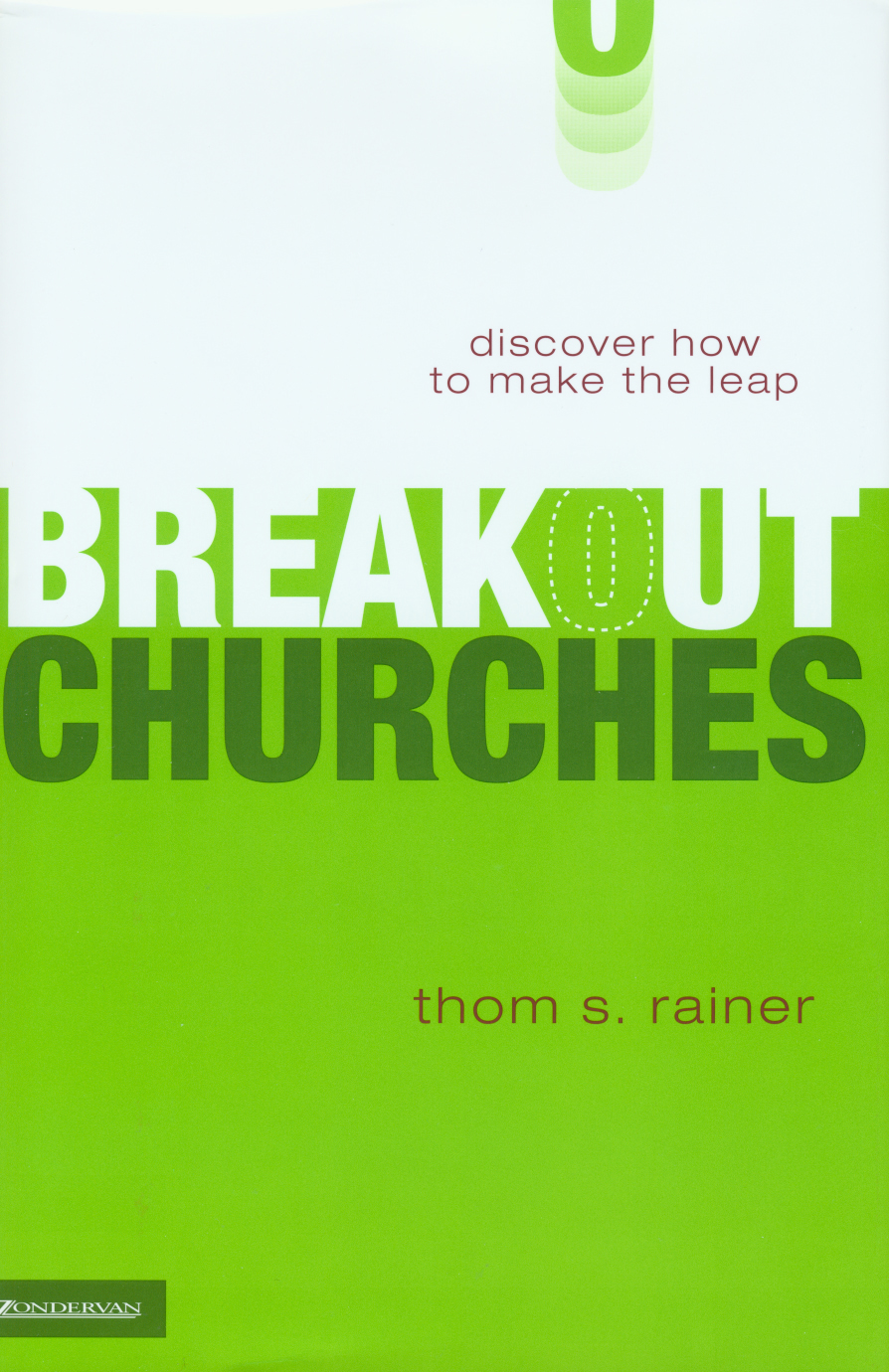
LOUISVILLE, Ky. (BP)–Churches devoted to Jesus Christ must strive to break out of mediocrity and achieve unprecedented fruitfulness, according to a new book by Thom Rainer, dean of the Billy Graham School of Missions, Evangelism and Church Growth at Southern Baptist Theological Seminary.
In “Breakout Churches,” released by Zondervan, Rainer and his research team highlight 13 churches that experienced an extended period of health and growth following a period of decline or plateau. Rainer labels these churches “breakout churches” and identifies key patterns and trends common to breakout churches.
Rainer’s research methodology and organizational structure are drawn largely from Jim Collins’ book “Good to Great,” which describes how businesses can transition from mediocrity to greatness.
“The research team was motivated by much more than curiosity and intellectual stimulation,” Rainer writes. “We wanted not only to find out what happens to churches that move to greatness, under the sovereignty of God, but also to apply what we learned for the benefit of the Kingdom and other churches.”
Using the analogy of a chrysalis — a caterpillar that is in the process of becoming a butterfly — Rainer identifies what he terms “the chrysalis factor.” The chrysalis factor describes the central elements contributing to a church’s transformation from mediocrity to greatness.
“I do not want to suggest that we have discovered some neat formulaic approach for leading churches to greatness,” he writes. “A sovereign God and the Holy Spirit are not instruments subject to manipulation by humanity. Yet the components of the chrysalis factor may provide insight into how God is working in his churches.”
Rainer points to six key components of the chrysalis factor and devotes at least one chapter to each.
First, churches must develop leadership with qualities such as sensitivity to criticism, determination, kindness and visionary thinking. Rainer taps the Book of Acts to identify several tiers of leadership, culminating with what he named “Acts 6/7 leadership.”
“Fewer than 1 percent of the senior pastors we studied have attained this level of leadership,” he writes. “Yet we believe this type of leadership is needed for the long-term health of churches. Eight out of ten of the approximately 400,000 churches in the United States are declining or have plateaued. Acts 6/7 leadership is desperately needed.”
Second, leaders of breakout churches must experience a moment in which they become aware of the church’s deficiencies, confront the facts and experience a personal crisis because of the deficiencies.
After leaders experience the moment of crisis, they develop the third component of the chrysalis factor: a commitment to address issues of personnel and infrastructure simultaneously, Rainer writes.
Fourth, the church must discover its vision by noting where the passion of the leaders, the gifts of the congregation and the needs of the community intersect.
“Not all of the leader’s passions are the same as the congregation’s gifts and passions, but some are,” Rainer writes. “Not all of the community’s needs are the same as the intersection of the leader’s and the congregation’s passions, but some are. When all three points intersect, the church knows its vision.”
Fifth, breakout churches develop a culture that demands excellence in all areas of church life.
“The breakout churches were not fanatical about excellence in the same way a Fortune 500 corporation might emphasize excellence,” Rainer writes. “The church leaders all spoke about a drive to glorify God, to please the Savior, or to do their best in his power for his sake. In other words, we found the drive for a culture of excellence to be theologically and biblically driven.”
Breakout churches complete their transformation by utilizing innovations to accelerate growth in a manner consistent with the vision, Rainer writes, noting that if churches trust God and follow biblical principles, they have the potential to move from mediocrity to greatness.
“There is little doubt that many American churches are sick,” Rainer writes. “The documentation … certainly paints that dismal picture. But there is no doubt that we serve a God of all possibilities. We must confront the reality of the struggles our churches face. And we must acknowledge a sovereign and omnipotent God who is the source of any solutions to the plight of the church.”
–30–

















